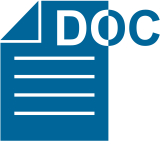KARAKTERISTIK CEBAKAN EPITERMAL TIPE SULFIDASI TINGGI DI DAERAH ERELEMBANG, TOMBOLO PAO, KABUPATEN GOWA, PROVINSI SULAWESI SELATAN
Abstract
Mineralisasi di wilayah Erelembang, Tombolo Pao, Kabupaten Gowa, Sulawesi Selatan merupakan salah satu tipe mineralisasi yang cukup menarik di kawasan ini. Penciri utama proses mineralisasi adalah munculnya alterasi silisifikasi, argilik-argilik lanjut, dan propilitik yang membentuk suatu zona. Kehadiran mineral alterasi spesifik yang teridentifikasi meliputi alunite, halloysite, jarosite, kaolinite, dickite, dan pyrophyllite, sebagai zona argilik-argilik lanjut, dengan luas sebarannya lebih dari 2 km2, menunjukkan zona ubahan bersifat asam. Selain itu, hal lain yang menonjol adalah tekstur vuggy silica dalam zona batuan terubah karena proses pelarutan.
Hasil pengamatan pada sayatan poles diketahui mineral sulfida yang teridenfifikasi adalah pirit, tetrahidrit, kovelit, enargit, serta hydrous iron oxide, dan sedikit kalkopirit, malakit, tenantit, galena dan hematit yang terdapat secara tersebar dalam zona argilik-argilik lanjut. Korelasi mineral ubahan yang spesifik (alunite, halloysite, jarosite, kaolinite, dickite, phyrophyllite), dengan mineral bijihnya (enargit, tenantit, tetrahedrit, dan kovelit) serta vuggy silica dapat memberikan gambaran mineralisasinya tipe epitermal sulfidasi tinggi. Munculnya konsentrasi anomali merkuri di wilayah tertentu, menunjukkan bahwa model cebakannya adalah tipe epitermal sulfidasi tinggi yang terbentuk pada lingkungan yang dangkal. Penelitian ini akan memberikan informasi baru terkait dengan konsep eksplorasi yang akan diterapkan di wilayah ini.
Downloads
References
Arribas, A., 1995. Epithermal High Sulfidation Mineralogical Ass. of Canada Short Course Vol.2.
Cooke DR, 2014, Characteristics, origins and significance for porphyry and epithermal exploration.
Hedenquist, J.W., 1996, Epithermal gold deposits: style, characteristics and exploration, Resources Geology Spec. Issue No1.
Hedenquist, J. W., Arribas, A., Jr., and Gonzalez-Urien, E., 2000, Exploration for epithermal gold deposits: Reviews in Economic Geology, v. 13.
Kadarusman, Ade., Maruyama, S., 2014. World's youngest blueschist belt from Leti Island in the non-volcanic Banda outer arc of Eastern Indonesia, Gondwana Research, Elsevier.
Monnier, C., Bellon, H., Girardeau, J., 1994. Datation 40K-40Ar de l’ophiolite de l’ile de Sulawesi, Indonesia.Paris, Academi desSciences, Comptes Rendue, V 319, ser, 249-356.
Parkinson, C.D., and Silver 1998..An outline of thr petrology, structure and age of the Pompangeo Schict Complex of Central Sulawesi, Indonesia. The Island Arc 7, 1-2, 231-245.
Pirajno, Franco, 2016, Hydrothermal mineral system, Module Training ‘Exploration and Development of Mineral Resources’, KIGAM South Korea.
Silitoe, RH, 1999, Styles of High_Sulphidation Gold, Silver and Copper Mineralisation in Porphyry and Ephitermal Environments, Bali.
Stoffregen,. and Charles N., 1987, Woodhouseite and Swnbergite in Hydrotermal Ore deposits Product of apatite during advance argillic alteration, The Canadian Mineralogist.
Sukamto, Rab dan Sam Supriatna, 1982, Peta Geologi Lembar Ujung Pandang, Benteng, dan Sinjai, Sulawesi, Skala 1 : 250.000. PPPG, Bandung.
Van Leeuwen, T.M & Pieters , P.E., 2011, Mineral Deposit of Sulawesi, Manado.
Zulkifli M.D., dan Moe’tamar., 2002, Inventarisasi dan Evaluasi Mineral logam di Kabupaten Takalar dan Kabupaten Gowa, Propinsi Sulawesi Selatan, Direktorat Inventarisasi Sumber Daya Mineral, Bandung.
Copyright (c) 2019 Buletin Sumber Daya Geologi

This work is licensed under a Creative Commons Attribution-NonCommercial-ShareAlike 4.0 International License.
Authors whose manuscripts are published agree to the following terms:
The publication rights of all journal manuscript materials published on the Buletin Sumber Daya Geologi website are held by the editorial board with the knowledge of the author (moral rights remain with the manuscript’s author).
The formal legal provisions for access to digital articles in this electronic journal are subject to the terms of the Creative Commons Attribution-ShareAlike (CC BY-SA) license. This means that Buletin Sumber Daya Geologi has the right to store, convert media/formats, manage in the form of a database, maintain, and publish the article without requesting permission from the author, as long as the author’s name is cited as the copyright holder.
Manuscripts published in both print and electronic formats are open access for educational, research, investigative, and library purposes. Beyond these purposes, the editorial board is not responsible for any violations of copyright law.















